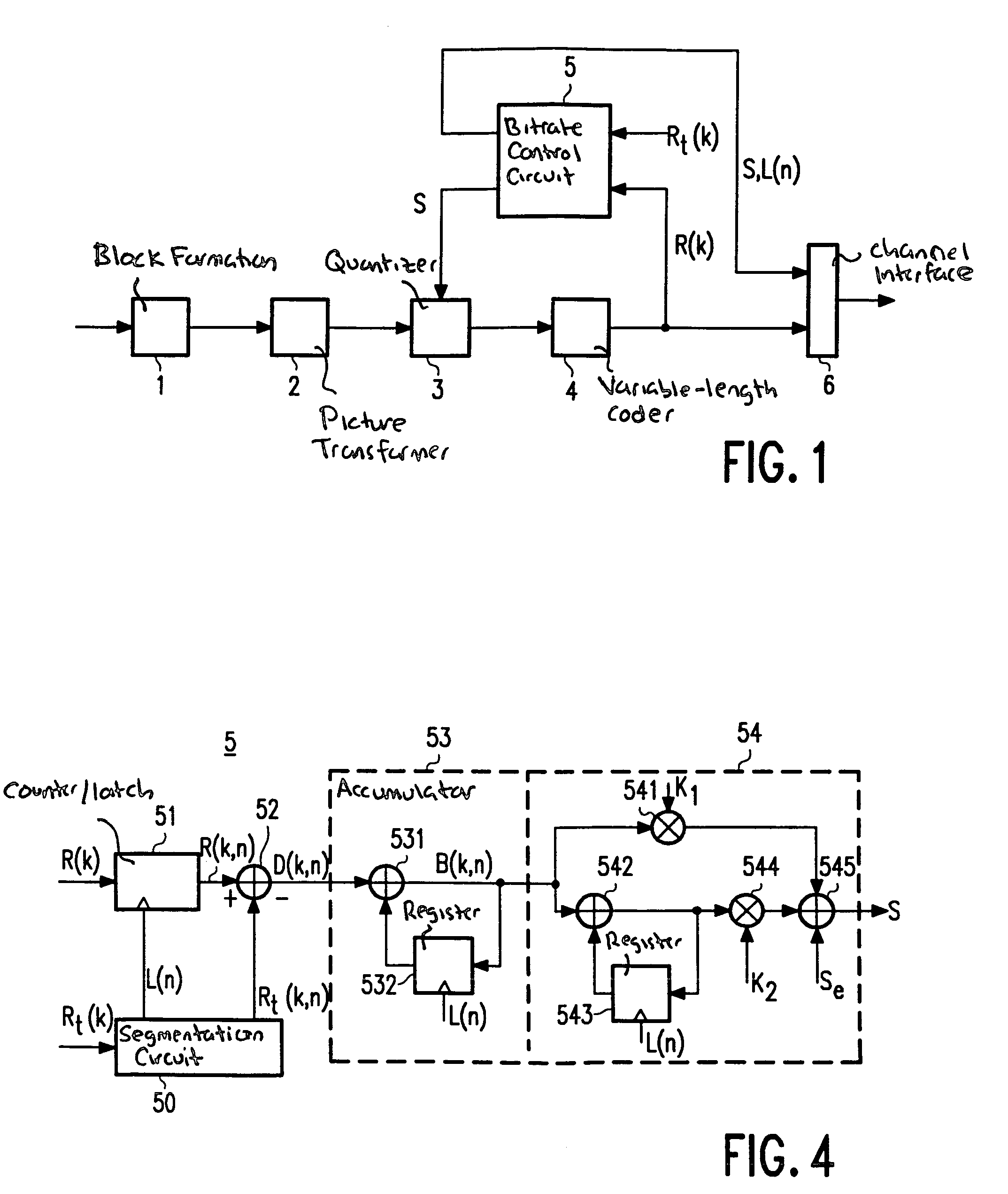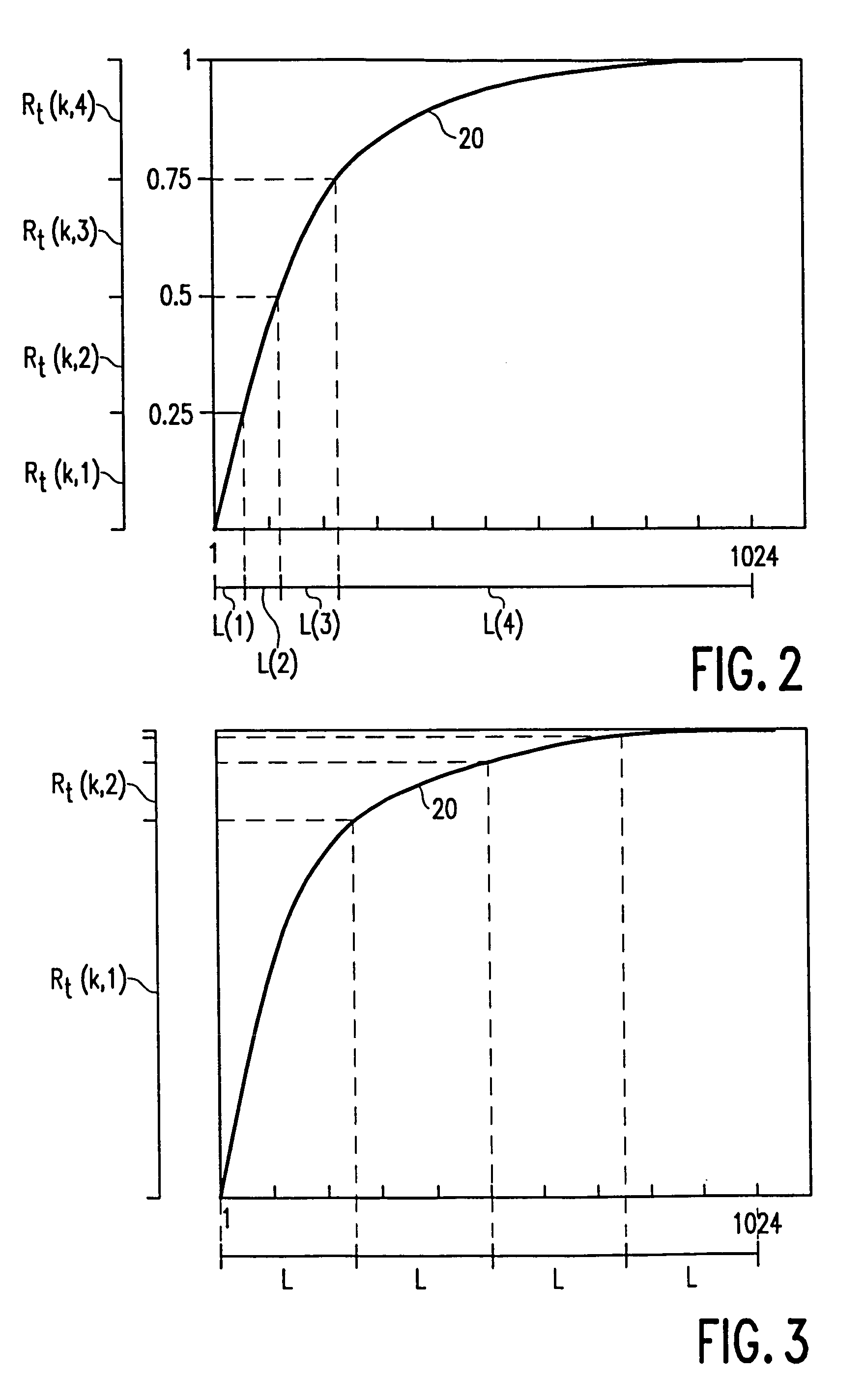Method for coding video pictures by determining a sub-target value for the number of bits per sub-series of coefficients
a video picture and sub-target value technology, applied in the field of video picture coding and decoding methods, can solve the problems of inability to obtain fixed bitrate per picture, inability to achieve fixed bitrate satisfactorily per picture, and inability to achieve fixed bitrate, etc., to achieve small margin and small variation of step size within a picture
- Summary
- Abstract
- Description
- Claims
- Application Information
AI Technical Summary
Benefits of technology
Problems solved by technology
Method used
Image
Examples
first embodiment
[0026]FIG. 5 shows the segmentation circuit 50. This embodiment is adapted to divide a series of coefficients into segments in accordance with FIG. 2. The segmentation circuit receives a clock signal c1 for each coefficient applied by picture transformer 2 to quantizer 3 (see FIG. 1). The clock signal is applied to a coefficient counter 500 which counts down the number of coefficients (1 . . . 1024) per picture block. The count of this counter is applied to a memory 501 in which an estimation of the cumulative distribution of the bit cost per picture block (see FIG. 2) is stored. The applied count represents a value of said cumulative distribution on the x axis. In response to the applied value x, memory 501 supplies the corresponding y value to a comparator 502. As soon as the y value has predetermined values (0.25, 0.50, 0.75 and 1 for N=4), said comparator supplies the latch signal L(n). Moreover, the segmentation circuit receives the target value Rt(k) for the number of bits per...
second embodiment
[0027]FIG. 6 shows the segmentation circuit 50. This embodiment is adapted to divide a series of coefficients into segments in accordance with FIG. 3. The segmentation circuit comprises the same coefficient counter 500 and memory 501 as the previous embodiment. The clock signal c1 is now also applied to a divider 504 which generates the latch signal L(n) always after 256 coefficients (N times per picture block). The y value supplied by memory 501 is applied by means of the latch signal to a computing circuit 505. With reference to the actual and the previous y value, this computing circuit determines the fraction F(n) of the number of bits Rt(k) which can be spent on coding of the actual segment. Said fraction F(n) is multiplied in a multiplier 506 by the target value Rt(k) so as to obtain the sub-target value Rt(k,n).
[0028]The memory 501 in FIGS. 5 and 6 may be a ROM in which an estimation once determined for the cumulative distribution of the bit cost per picture block is stored. ...
PUM
 Login to View More
Login to View More Abstract
Description
Claims
Application Information
 Login to View More
Login to View More - R&D
- Intellectual Property
- Life Sciences
- Materials
- Tech Scout
- Unparalleled Data Quality
- Higher Quality Content
- 60% Fewer Hallucinations
Browse by: Latest US Patents, China's latest patents, Technical Efficacy Thesaurus, Application Domain, Technology Topic, Popular Technical Reports.
© 2025 PatSnap. All rights reserved.Legal|Privacy policy|Modern Slavery Act Transparency Statement|Sitemap|About US| Contact US: help@patsnap.com



